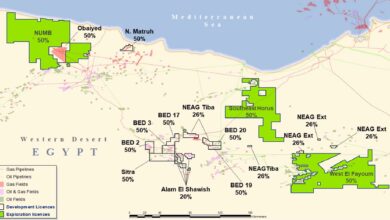Jellison: Challenging shale wells require creative pipe, drill string solutions

By Katherine Scott, associate editor
When typical wells in the Bakken Shale are 17,000-ft MD, 11,000-ft TVD with a 6,000-ft horizontal reach, demands on drill pipe become significantly higher, Michael Jellison, NOV Grant Prideco, said at the 2013 SPE/IADC Drilling Conference & Exhibition on 5 March in Amsterdam. “It pushes the drilling equipment and rig crews beyond the requirements of typical onshore well construction projects.” Further, these wells can have high bottomhole formation temperatures that, in some cases, approach 375°F, which can precipitate major problems for the drill pipe and drill string, he explained.
With the dramatic increase in North American shale drilling over the past several years, as well as strong expectations for growing development of unconventional resources in regions like Europe, South America, Australia and various regions of Asia Pacific, Mr Jellison offered several solutions to mitigate common challenges in shale wells. “These wells are pretty challenging, and there’s a steep learning curve associated with them,” he said in presenting SPE/IADC 163447, discussing challenges related to hardband and drilling wear, downhole heating failure and stick-slip.
Proper hardband selection, application and maintenance are essential to successfully and safely drill challenging shale wells, especially as many of these wells encounter highly abrasive formations that can generate heavy wear on the tool joints, Mr Jellison said. The correct hardband solution can maximize drill string life by protecting the tool joints from excessive wear, minimize wear of the intermediate casing strings in the well and reduce the friction coefficient between the drill pipe and the wellbore.
For critical shale applications, he noted, the hardband system must be casing friendly, with no tungsten carbides in its formulation. They should be applied in a raised configuration to maximize tool joint protection, and both the pin and box members should include hardband to protect the tool joints. “On shale wells with abrasive formations, it is essential to implement a rigorous hardband inspection and reapplication program to ensure the tool joints are protected and the useful life of the drill string is not unnecessarily compromised.”
Downhole heating failure is another major concern. Although not unique to shale applications, the directional drilling followed by long horizontal sections common in shale drilling can promote high side loads between the drill pipe and wellbore; this can quickly create conditions conducive to downhole heating, Mr Jellison explained. He added that drill string failures caused by friction heating of bottomhole assembly (BHA) components and drill pipe have risen significantly over the past several years. The consequences of downhole heating can be severe, often resulting in axial separation of the drill string and creating potential well control issues, costly fishing jobs and other remedial efforts, he said. Using drilling fluids with low coefficients of friction, minimizing doglegs and dogleg severity, and utilizing friction-reducing tools, such as drill pipe rubbers and non-rotating drill pipe protectors in areas of the drill stem where high side loading exists, are several ways to prevent downhole heating failure.
Stick-slip problems have also been encountered in many shale wells, he said. The primary concern for the drill string is that severe stick-slip conditions can cause downhole connection back-offs. “These problems have not been isolated to certain shale plays or fields, and furthermore, the problems have not been consistently experienced within the same field, indicating that drill bit and BHA designs, along with drilling practices and procedures, have a strong impact on stick-slip and are critical to mitigating problems,” Mr Jellison said. Mitigation techniques include incorporating torque control components into the bit design, adding special rotary directional subs to the BHA, and using a drill bit and reamer in combination to reduce torque and promote torque stability.
Illustrating this particular challenge, Mr Jellison discussed a case study in the Haynesville in North Louisiana, where a string of 4 1/2-in. drill pipe was being used to drill a well that had a projected total MD of 16,700 ft. Rig reports indicated tight hole problems and frequent stuck pipe instances, Mr Jellison said. The drilling operation included extensive backreaming operations, and the top drive stalled several times, indicating severe downhole stick-slip. An investigation concluded that improper connection make-up on two of the three drill pipe back-offs very likely contributed to the back-offs, he said. “Stick-slip was clearly a major factor in all the connection back-offs.”
Concluding his presentation, Mr Jellison stressed that creative solutions will be required to continue to overcome industry’s shale development challenges. “We’ve made a lot of progress and had a lot of successes in shale drilling applications. There will be more challenges in the future, but I’m confident that our industry can overcome them.”




